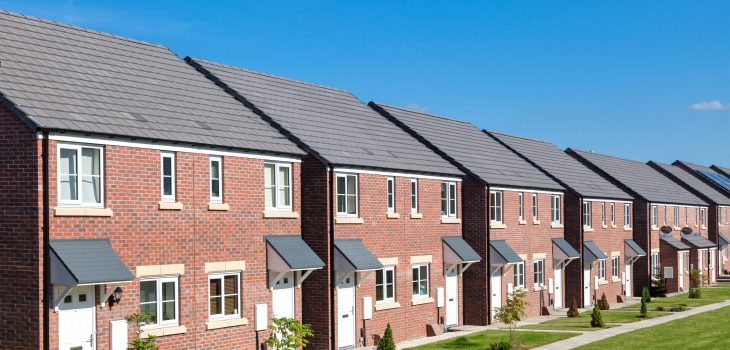
The end of Stamp Duty Holiday
It’s the 1st of October and the first day back to pre-Stamp Duty Holiday rates!The Stamp Duty holiday formed part of a package of measures designed to stimulate the housing market during the first year of the pandemic. Frozen in March 2020 it was created to help buyers whose finances were damaged by the pandemic. Other schemes the government have introduced include ‘Help to Buy’ and low mortgage deposits.
Together these schemes formed the government’s economic stimulus package for the housing industry in uncertain times.
The stamp duty break up to £500,000 was tapered down to £250,000 in July and from today, 1st October, property purchase tax rates revert to normal – all homes costing more than £125,000 incurring bills. There is a higher £300,000 threshold for first-time buyers. Similar tax breaks in Scotland and Wales have already ended.
Unprecedented growth in house prices
After seven weeks of lockdown, starting in March 2020, the housing market was re-opened with renters and buyers allowed to move home and view properties, as long as they observed physical distancing guidelines.
In the intervening months we saw massive growth in both house prices and volumes of houses on the market. House prices have increased by 10% compared with this time last year (according to Nationwide) and March 2021 saw a 77% year-on-year increase on sales agreed. The busiest start to a year in a decade (since records for this data set began in 2009).
The surprise pandemic property boom has been aided by cheap mortgage rates and boosted by demand for bigger properties and a shift in buying attitudes as more people work from home.
This has led to red hot markets in commuter towns on the edge of the countryside and popular rural hotspots, and further fuelled by the stamp duty break offered by Chancellor Rishi Sunak.
House prices in September were about 13 per cent higher than before the pandemic began in early 2020, Nationwide said.
During that period an interesting characteristic emerged, demand for homes within the higher price brackets, particularly amongst homes above £750,000, rose significantly, understandable since homes priced above the £500,000 Stamp Duty threshold benefitted the most from the tax relief.
The first UK lockdown, and the introduction of the furlough scheme, saw a mass exodus from the office and a desire for fresh surroundings combining with noted buyer demand for more space.
This curiosity coupled with government incentives, the Stamp Duty Holiday – which made it more cost-effective for people searching for a new home, the ‘Help to Buy’ scheme – which made it more affordable for first time buyers to purchase a new home, and the low mortgage guarantee scheme – which enabled people to get a mortgage with just a 5% deposit, drove the housing market.
And for housebuilders, buyer behaviour has meant that they have been busier than ever before with many securing sales on plots well before construction is complete to satisfy crazy demand for new homes.
So, what’s next?
The pandemic-era housing boom is showing signs of slowing and the end of the Stamp Duty Holiday is likely to only accelerate this. Rise in housing prices is starting to flounder, with a 7.1% increase in September compared to 7.6% the previous month, according to The Halifax.
Whilst we have seen an unprecedented level of forward sold plots, driven by the desire to move and the Stamp Duty Holiday, the market is beginning to settle into more normal conditions. Housebuilding starts and completions fell in the second quarter of the year, according to official figures, the first fall in housebuilding seen since the initial recovery from last year’s spring lockdown.
Activity is likely to soften for a period after the stamp duty holiday expires at the end of September, given the incentive for people to bring forward their purchases to avoid the additional tax. Underlying demand is likely to wane around the turn of the year if unemployment rises as government support winds down and a possible rise in interest rates tipped for the near future seems likely.
However predictions are far from certain. The labour market has remained remarkably resilient to date and, even if it does weaken, there is scope for shifts in housing preferences as a result of the pandemic – such as wanting more space or to relocate – to continue to support activity for some time yet.
Driving Plot Sales
As we are now returning to more normal conditions, developers will once again be looking to make use of tools to help commit their dependent buyer. Schemes such as Assisted Move & Part Exchange will play an important role in getting their buyer to commit to purchasing a new build plot.
Part Exchange, a popular method of helping developers and their buyers providing a buyer with a guaranteed purchase of their property, and putting them in a position to reserve with the housebuilder quicker than traditional methods.
Assisted move provides assistance to a new build buyer providing support in the sale of their property, avoiding the difficulties and risks of selling on the open market, enabling them to reserve with a housebuilder.
In a normalised market housebuilders will rely on such schemes to entice and secure buyers and win over competition.
jordan 4 reps
rep jordan 4
jordan 4 replica
jordan 4 reps
jordan reps cheap
jordans reps
air jordan reps
jordan 4 reps cheap
jordan 1 reps
off white replica
replica off white
fake kobes
kobe reps
balenciaga track reps
jordan 4 reps
yeezy slides reps
yeezy slide reps cheap
jordan 4 reps
foam runner reps
rep foam runners
reps shoes cheap
size 14 reps